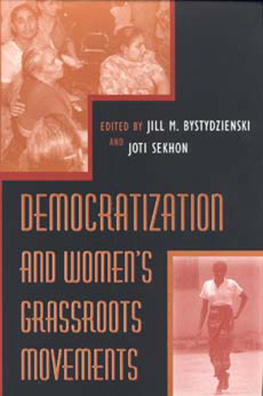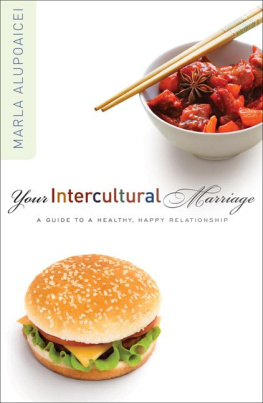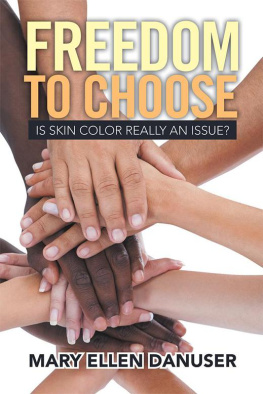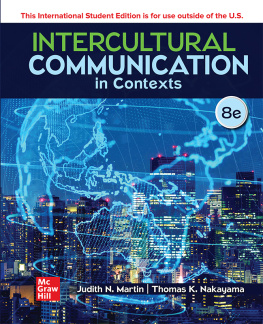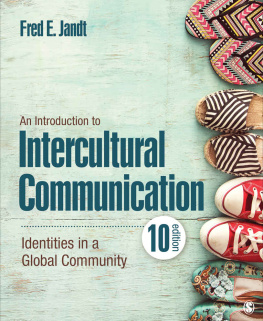Thank you for buying this ebook, published by NYU Press.
Sign up for our e-newsletters to receive information about forthcoming books, special discounts, and more!
Sign Up!
About NYU Press
A publisher of original scholarship since its founding in 1916, New York University Press Produces more than 100 new books each year, with a backlist of 3,000 titles in print. Working across the humanities and social sciences, NYU Press has award-winning lists in sociology, law, cultural and American studies, religion, American history, anthropology, politics, criminology, media and communication, literary studies, and psychology.
INTERCULTURAL COUPLES
INTERCULTURAL COUPLES
Crossing Boundaries, Negotiating Difference
Jill M. Bystydzienski
NEW YORK UNIVERSITY PRESS
New York and London
www.nyupress.org
2011 by New York University
All rights reserved
References to Internet websites (URLs) were accurate at the time of writing. Neither the author nor New York University Press is responsible for URLs that may have expired or changed since the manuscript was prepared.
Library of Congress Cataloging-in-Publication Data
Bystydzienski, Jill M., 1949
Intercultural couples : crossing boundaries, negotiating difference/
Jill M. Bystydzienski.
p. cm.
Includes bibliographical references and index.
ISBN 9780814799789 (cl : alk. paper) ISBN 9780814799796
(pb : alk. paper) ISBN 9780814709474 (ebook)
1. Interethnic marriage. 2. Intercountry marriage 3. Cultural relations.
4. Interracial marriage. 5. Racially mixed people. I. Title.
HQ1031.B97 2011
306.8450973dc22 2010048337
New York University Press books are printed on acid-free paper, and their binding materials are chosen for strength and durability. We strive to use environmentally responsible suppliers and materials to the greatest extent possible in publishing our books.
Manufactured in the United States of America
c 10 9 8 7 6 5 4 3 2 1
p 10 9 8 7 6 5 4 3 2 1
For my daughter, Katy
Contents
Acknowledgments
Like all scholarly projects, this book would not have been possible without the help and support of many people. I am eternally grateful to the couples who agreed to be interviewed and who shared so generously with me their accounts of their lives together. My colleague and friend Estelle Resnik conducted about half of the interviews and transcribed many of them. Initially, Franklin College of Indiana provided two substantial faculty development grants for transcriptions, and Iowa State University made available additional funds for the completion of the final transcripts.
Throughout the process of writing this book my life partner, Hal Pepinsky, read chapter drafts and gave me, as always, his unconditional support. I am thankful to colleagues Donna Eder, Tracey Owens Patton, and the late Steven Schacht, who read chapters and provided valuable feedback, and to two anonymous reviewers who gave me excellent suggestions for revisions. Gary Dunham provided his invaluable editing expertise in the last phase of the project. Ilene Kalish, executive editor at NYU Press, has been wonderful to work with. I greatly appreciated her encouragement throughout the project and am especially grateful to her for giving me generous contract extensions when I had to postpone delivery of the manuscript due to my move to The Ohio State University.
Finally, I want to thank all of the people, too numerous to mention, who have expressed genuine interest in this project and whose comments, questions, and advice motivated me to continue with the book and to complete it after many years. Their gentle urging kept me returning to the task, often with a new perspective, mining the rich interviews for fruitful analysis and significant findings.
Introduction
Diverse populations in the United States have interacted increasingly during the last several decades, despite the persistence of racial segregation, ethnic antagonism, and anti-immigration sentiments. Cross-cultural, cross-racial, and international contacts have grown tremendously, facilitated by the breaking down of legal and cultural restrictions to interracial marriage, by affirmative actionwhich expands the opportunity for meeting people of diverse backgrounds in the workplace, and by technological advances that make possible greater mobility and communication around the globe. A rapidly growing consequence of this increasing contact is intercultural couples: domestic partnerships comprised of partners from different ethnic, racial, religious, or national backgrounds.
Although accurate statistics concerning such persons married to or living with each other in the United States are not readily available, existing data as well as estimates suggest that intercultural couples may well number in the tens of millions (Clemetson 2000; U.S. Census Bureau 2008a; 2008b). During the 1980s and 1990s, out-marriage rates for European American groups, for American Indians, and for African Americans in the United States increased significantly; intermarriage between Catholics and Protestants, Jews and Gentiles, and between persons of different class backgrounds and educational levels also grew (Kalmijn 1998). As new immigration from Asia and Latin America has increased racial and ethnic diversity in the United States, rates of intermarriage between racial and ethnic groups have risen concurrently (Lee and Bean 2004). Demographic changes in family structure involving an increasing number of individuals experiencing the independent life stage, or living on their own, traveling, and supporting themselves, are also connected to establishing more nontraditional unions (Rosenfeld 2007).
The multilayered experiences of such nontraditional intergroup couplesheterosexual as well as same-sex unionsare thrown into relief in the pages that follow, drawing largely upon dozens of in-depth interviews with persons living in mixed domestic partnerships representing a broad spectrum of ethnic, racial, religious, socioeconomic, and national backgrounds. Despite the growing presence of intercultural couples in the United States and worldwide, they remain an understudied phenomenon. The few studies of intergroup partnerships to date have been relatively restricted in scope, concerned mostly with interracial couples (Bratter and King 2008; Childs 2005; Forry, Leslie, and Letiecq 2007; Fu 2008; Gullickson 2006; Johnson and Warren 1994; Kennedy 2004; McNamara, Tempenis, and Walton 1999; Root 1992; 2001; Rosenblatt, Karis, and Powell 1995; Stuart and Abt 1993; Wilkerson 1991; Yancey and Lewis 2009; Zhang and Van Hook 2009), interfaith marriage (Berman 1968; Curtis and Ellison 2002; Glaser 1997; Kaplan 2004; Lazerwitz 1995; Lee 1994; McGinity 2008; Medding 1992; Monahan 1973; Romano 2003), or international couples (Grearson and Smith 2001, 1995; Romano 1988; Thornton 1992).
Intercultural couples pivot on the interaction of people of different backgrounds at the level of personal intimacy in daily life. In this context, where the influence of intimacy provides a field of nurture and conflict, it is possible to see how members of various ethnic, racial, national, and religious groups, as well as people of different genders and sexual orientations, perceive and respond to social differences. Each partner brings a different set of cultural experiences to the relationship that may include gender expectations, ideas about appropriate relations with family members, childrearing, general lifestyle, and even language. Sometimes the differences may be unrecognized or seen as minimal. In the process of everyday life some differences, however, can become salient, forming the basis for conflict, enriching diversity, or both (Breger and Hill 1998). Those differences regarded as problematic are then negotiated by the partners in the course of their daily lives together. Negotiations of difference take place at two levelsbetween the partners in the couple relationship, and between the couple and individuals and groups outside the partnership (e.g., family members, acquaintances, people in the community or neighborhood). These types of negotiations are sometimes openly acknowledged in discussions and sometimes more implicit arrangements and accommodations are worked out without explicit articulation.


